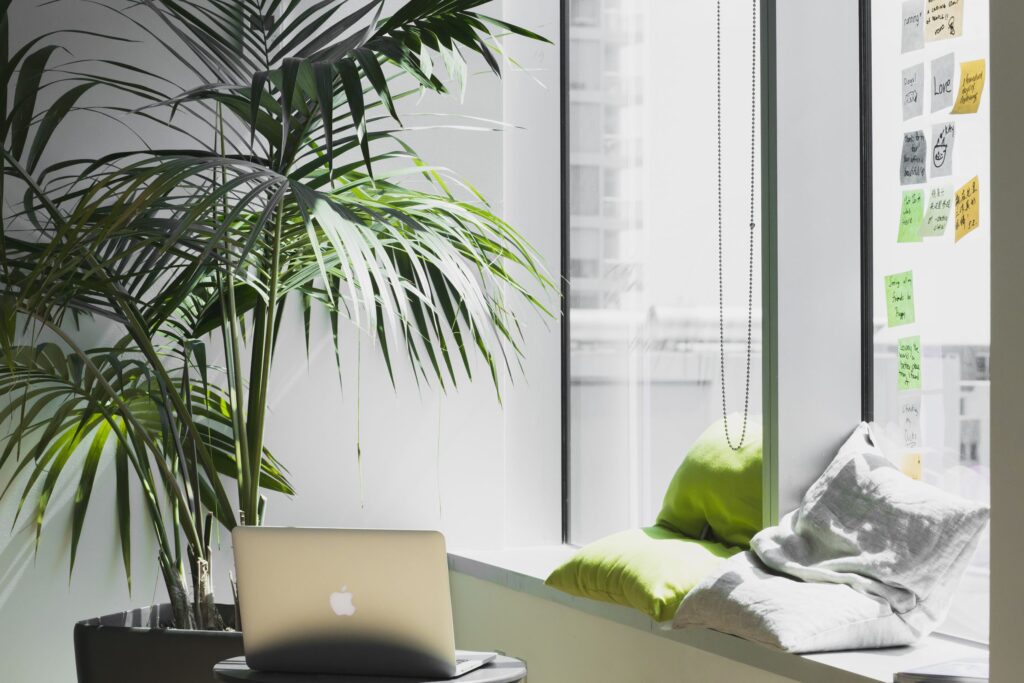In the year 1976, a man named Stamatis Moriatis received life-changing news from his doctor. At around 60 years old, he was told he had terminal lung cancer, and that he might have only six months left to live.
Instead of giving in to sadness, Stamatis made an unusual choice. He left the busy city life behind and went back to his peaceful hometown in Greece.
This was a place where time seemed to move slowly, old traditions still mattered, and modern technology hadn’t completely taken over.
Back in the arms of his old community, Stamatis lived a life far from the hustle and bustle of the 20th century.
He spent time with his friends and family, enjoyed local food, had a glass of wine now and then, and marveled at the stars in the night sky.
What’s amazing is that Stamatis continued to live against all odds. The six months the doctors gave him turned into years, and those years turned into decades.
Stamatis, who was supposed to live only six more months, lived on for another four decades.
Stamatis’s story is unique, but it’s not the only one. There are places on Earth where living a very long and healthy life is common. These places are called “Blue Zones.”
In these Blue Zones, something remarkable is happening. People are living much longer and healthier lives compared to the rest of the world.
This leaves us with a question: What are they doing differently, and what can we learn from them to lead healthier, happier lives in our fast, tech-focused world?
If we look at our grandparents’ generation and the generations before, we’ll notice that the life expectancy a hundred years ago was around 50 or even less.
Thanks to the healthcare services available to us today, the number of infant deaths has decreased a lot and there is better management of infectious diseases which has led to an increased life expectancy of around 75 years, and is expected to improve even further.
Yet, stress is becoming more common and we’re seeing a rapid spike in mental health problems in recent years.
If we look back at the people from those earlier generations, we’ll find that the stress levels and mental health problems were almost non-existent. They led very healthy and prosperous lives.

In this blog, we’ll explore how things have changed over time and we’ll compare how people live today to how they lived a hundred years ago. We’ll look at the changes in lifestyle, food, and physical activity, and how they connect with nature.
We’ll discover the wisdom from the past and explore how we can blend the best of both worlds to live better lives today, just like the people living in these Blue Zones.
So, let’s start this journey and learn how to live better, no matter which time we call our own.
Table of Contents
The Evolution of Technology
Technology has drastically changed the way we live in the modern-day world. A hundred years ago, life was much simpler. People used handwritten letters to communicate, horses for travel, and books for learning.
But as time moved forward, technology became powerful with each passing year and it has reshaped everything around us.
The technology we have today makes our lives so much easier. Our smartphones and the internet allow us to talk to our loved ones anywhere on the planet with just a tap.
We have cars and airplanes that make traveling so much faster, easier, and accessible.
The healthcare sector has seen so much advancement and reached the point where life-saving surgeries and treatments have become so common and accessible.
Online education platforms and free services like YouTube provide knowledge at our fingertips. So it’s undeniable that technology has made our lives more convenient, productive, and comfortable.
However, like everything else, there is a negative side as well. Things like social media have completely changed the way we connect with people. We’re often stuck in the online world rather than having real conversations.
We see people with their perfectly curated profiles and carefully posed photos as a perception of social life. Genuine face-to-face conversations have been replaced by text messages, likes, and emojis.
Television and video games keep us glued to the screens in the comfort of our homes which leaves no time for physical activities and outdoor sports.
We keep sitting for long hours binge-eating our favorite snacks which is leading to a spectrum of health problems. Thanks to food delivery services, fast and unhealthy food has become a regular choice for us.
Lifestyle 100 Years Ago vs. Lifestyle Today
As we venture deeper into our journey, let’s focus on the changes in lifestyle over the past hundred years or so. Just as technology has evolved, so has the way we live, work, and spend our days.
These changes have been both positive and negative, and paint a vivid picture of our evolving lives.
Positive Changes in Lifestyle
One significant shift over the last century has been in the nature of work. A hundred years ago, many people worked long hours often in physically demanding jobs like farming, factory work, etc.
If someone said “I’m going to work”, that would mean they were heading to a physical location outside their home and working hard till evening.
Thanks to technology, work has become less physical as most of us are now employed in jobs that rely on knowledge and creativity.
We have the added advantage of flexible work schedules. And with the recent trend of work-from-home jobs, we have the option to call our beds or couches our office. This has improved the work-life balance for many people.
When it comes to leisure, we have a lot of choices which can be overwhelming at times. People in those times had limited choices to entertain themselves.
Now we have almost everything either a touch or a phone call away. We have access to a vast array of ways to unwind, we can watch any movie or listen to any music through streaming services and we can play video or online games.
These activities provide us with the opportunity to relax and escape from real-world problems.
Negative Changes in Lifestyle
With the rise of technology and the flexible work life, it has become difficult for us to stay away from our phones, laptops, and TV screens.
This has blurred the boundaries of our work and personal life and this constant connectivity with the online world often leads to burnout and a reduced quality of life.
The good thing about the nature of work a hundred years ago was that it kept them physically active the entire day. And they were able to have meaningful conversations with people.
They had simpler and more structured lives. They lived in harmony with the natural rhythm of day and night and were close to nature.
On the other hand, the modern world never sleeps. It operates around the clock, all thanks to technology. Some of us have night shifts or work late hours.
We stay awake till late at night watching stuff online. We have very minimal interaction with people.
This non-stop lifestyle has completely disturbed our sleep patterns and food habits. We find ourselves in a cycle of long working hours, increased screen time, unhealthy eating habits, and irregular sleeping patterns.
All this has completely thrown us off-balance which is negatively affecting our overall well-being.
Diet and Nutrition 100 Years Ago vs. Today
The last century has made quite a difference in the world of dietary habits. A hundred years ago our meals were simpler, closer to nature, and deeply rooted in tradition.
The concept of fast food was virtually nonexistent. People would gather around tables to enjoy homemade dishes made from fresh, locally sourced ingredients.
Whole grains, fruits, vegetables, and lean proteins were staples of their meals. These were not just meals, they were experiences prepared with care and savored in the warmth of family gatherings.
As time passed, the mid-20th century brought about a significant change as we invented processed foods. Grocery store shelves and our plates began to fill with canned goods, frozen foods, and packaged snacks.
While these processed goods were convenient, they also had a lot of preservatives, additives, and artificial flavors.
All this changed our focus from nutrition to ease and convenience. And now it wasn’t about what we ate, but about how quickly we could eat it, how long we could store it, and how easily we could carry it.
Fast forward to today, and fast food has become a staple in our modern-day busy lifestyle. Foods like burgers, fries, sugary drinks, and fried stuff are readily available, and “fast food” has taken on a whole new meaning.
Even on our days off, we prefer a quick drive-thru over the home-cooked meals of our grandparents’ era.
All this has had a very negative impact on our health. Processed foods and packed snacks, which should have been occasionally consumed have replaced our daily meals completely.
They are packed with sugars, unhealthy fats, and high levels of preservatives and additives that are causing health problems like heart-related problems, diabetes, obesity, mental health issues, etc.
The way forward is in our hands and we are free to make choices that can redefine our eating habits.
By understanding how the food we eat has evolved over time and the impact it has on our overall health, we can make informed decisions about what we want to eat every day.
It’s not about convenience, but about taking care of our well-being. If we pay attention, the journey of our dietary habits, from tradition to convenience has taught us valuable lessons.
Now it’s up to us to use this knowledge to choose the right type of food we want to put in our bodies so that it has a positive impact on our health.
Physical Activity
Just like our diet, our relationship with physical activity changed a lot. The evolution of technology has completely changed the way we move. Let’s understand this shift and how it is impacting our lifestyle and overall health.
A hundred years ago, people didn’t have to set aside time for physical activity as it was an integral part of their daily lives.
People either walked or cycled to get around and they were mostly employed in jobs that involved physical work. The connection between work and physical activity was the way of life.
In their free or leisure time, they enjoyed the great outdoors. They were either engaged in outdoor adventures, communal activities, or outdoor sports.
Activities like hiking, swimming, and various other sports didn’t have to be organized, these were natural and fun ways of entertainment and spending leisure time.
They didn’t consider these activities as exercising, rather they were a chance to connect with nature and with each other that built a sense of togetherness and well-being in their community. And this was true till the late 20th century.
But as we entered the digital age, our physical activity levels began to significantly decline. The rise of technology made our lives so convenient that it limited our need for physical effort but it is also contributing to mental stress.
Take transportation, for example. Earlier, people often walked or rode bicycles to get from one place to another.
But now, the convenience of cars and public transportation has made it easier for us to cover distances without expending much physical effort.
A short drive or even a few clicks on a smartphone app can replace the need for a long walk or a bike ride.
The nature of our work has also changed. Many jobs that used to involve physical labor, like farming or manufacturing have transitioned to desk jobs that require little physical exertion but contribute to a lot of mental stress.
We now spend more time sitting at desks or in front of computers which leads to a very sedentary lifestyle.
Technology has completely taken over our homes. We can control almost everything from our smartphones, whether it is turning on the air conditioner or thermostat, or ordering food online.
While technology has made our lives more comfortable and efficient, it has significantly reduced the need for physical activity in our daily lives. This shift in lifestyle has had a very negative impact on our physical and mental health.
Connection with Nature
A century ago and even till the late 20th century, people were deeply connected to nature in ways that are rare today. Whether they lived in small towns or rural areas, nature was all around them.
Their homes often had gardens filled with fresh fruits and vegetables, and colorful flowers.
They could step into their backyards to hear birds singing, smell the earth after rain, and gaze up at a night sky filled with stars. Nature wasn’t a destination, it was a constant companion.
They spent a good amount of time either working in the fields or in their garden. They would walk barefoot and let their bodies connect with the earth.
But as cities grew and technology advanced, our connection to nature started to fade. Cities expanded and green spaces were replaced by tall buildings and busy streets.
Fields turned into parking lots and meadows disappeared beneath the concrete. The peaceful outdoors transformed into crowded parks.
Our lives became busier. We started juggling work, family, and our digital gadgets. The little access we have to nature in our urban surroundings often goes unused.
We might have a park nearby, but we’re too caught up in our hectic schedules and our digital world to find time to visit.
In this digital age, our bond with nature has weakened. This fast-paced city life and our tight schedules have created a gap between us and the natural world. We often forget that we have come from this earth and one day will return to it.
So, it’s important that we recognize this gap and make an effort to bridge it. Our well-being is closely tied to our connection with the world beyond screens.
Health Consequences
Our current way of living which is heavily influenced by technology and city living has led to a range of physical and mental health problems. Let’s take a closer look at them.
Physical Health Problems
One of the most concerning health issues caused by this modern-day lifestyle is the rise in chronic diseases. Health problems like diabetes, heart disease, and high blood pressure have become more common.
Our eating habits, our sedentary lifestyles, and our daily mental stress are the root causes of all these problems.
The convenience of fast food and the prevalence of processed foods have flooded our diets with unhealthy fats and sugars that are leading to weight gain and chronic health problems.
Obesity is one of the main concerns these days as it is linked with various health problems like diabetes, joint pain, and heart conditions.
The convenience of technology and a decline in physical activity have led to a surplus of calories consumed and a deficit of calories burned, which is tipping the balance toward weight gain.
The sedentary lifestyle we’re leading today is becoming more and more common. We spend most of our time sitting at desks, in front of screens, or commuting in cars.
Motor vehicles have replaced walking, elevators have replaced stairs, and digital technology has replaced outdoor activities.
Physical activity, which was once the way of life has now completely declined and is one of the main reasons for weight gain and chronic diseases.
Mental Health Problems
Our mental health has taken a serious hit in this fast-paced digital world. Stress, which was once an occasional thing has now become very common.
The pressure of the highly demanding jobs we’re employed in today, the constant connectivity with the world brought on by technology, and the fast pace of our lives creates a sense of being always “on”.
The pressure to meet deadlines, respond to messages, and maintain a busy schedule is contributing to chronic stress. Stress is one of the main reasons behind mental health problems like anxiety and depression.
Moreover, the digital age has introduced its own set of stressors.
The pressure to maintain a perfect online image, the endless stream of information, and the comparisons we make with others on social media are contributing to a unique set of mental health problems.
We are constantly under pressure, both from within and the outside world which becomes a bit too much for our mental health.
The line between work and personal life has blurred. And while this digital world offers unprecedented convenience, it has also introduced new stressors.
Lessons from the Past: Balancing the Modern and Traditional
The modern-day technological world we live in today has undoubtedly given us countless tools and technologies to make our everyday lives easier, but it has also taken away valuable elements that once allowed us to lead a healthy and active life.
The comforts of technology have seduced us into a sedentary lifestyle.
So let’s change that and explore how we can blend the best of both worlds to make a life that is not only healthier and happier but has the potential to transform the entire world into a “Blue Zone,” where everyone lives a hundred years.
Mindful Eating
People in the past primarily relied on fresh and unprocessed foods, a lesson we should all apply to our lives today.
Choose whole foods over processed ones and be vigilant about unhealthy fats and sugars. Eat fresh fruits and vegetables as they are rich in essential nutrients.
If you have the luxury of your own garden, try to grow your own food as much as you can.
There’s something special about cultivating your produce and knowing precisely where your sustenance comes from. And avoid canned and processed foods.
Another wise practice from the past is cooking healthy meals at home with fresh ingredients. This way, you can control what you are putting in your dishes and cultivate a deeper connection with the food you consume.
Whenever possible, share these meals with friends and family as it will not only nourish your body but also strengthen social bonds, which is an important aspect of human well-being.
An Active Lifestyle
Physical activity was an integral part of the daily lives of people even till the late 20th century. We, too, should aim for a more physically active lifestyle.
You can start by making simple choices like walking or cycling for short commutes instead of relying on the car.
Find ways to include physical activity in your daily schedules, be it through regular walks or cycling.
If your schedule doesn’t allow this or if you can’t do it alone, then consider joining classes like yoga, Zumba, aerobics, or hitting the gym. Try to engage in activities like swimming or running that push your body and challenge you.
Reconnect with Nature
We should understand that we are an extension of this planet, we’ve come from this earth and will eventually get back to it.
So it’s very important for us to stay connected with the planet. So make it a habit to spend some time in nature every day, even if it’s in a nearby park.
Take off your footwear and walk barefoot on the grass. Feel the earth beneath you. If you have a garden, spend your mornings and evenings there enjoying your favorite cup of tea or coffee, or gardening.
If you are fortunate enough to live near a lake or river, take advantage of the calming presence of water and spend quality time in natural surroundings.
Social Connections
Social connections are the foundation of human well-being. While technology allows us to connect with people worldwide, it should not replace the value of physical interactions.
Spend some time with friends and family every day, make new friends, and nurture meaningful relationships.
Conscious Technology Use
Finally, let’s not forget that the technology available to us today is a blessing. Tools such as smartphones, laptops, and tablets have revolutionized our lives.
They help us stay connected, access a wealth of knowledge, and remain informed about what’s happening in the world.
They provide us with the means to enjoy entertainment like watching movies and listening to our favorite songs at any time and anywhere.
However, the key lies in using these tools wisely and consciously. They are invented for our benefit only but it’s our responsibility to strike a balance.
We shouldn’t become so obsessed with them that we neglect everything else. We shouldn’t be spending all our time on screens and neglecting other important aspects of life like physical activity and spending time with people.
These devices are meant to improve our lives, make us smarter, and keep us connected.
But they should never replace the fundamental things that make us human, like staying active and building relationships.
Striking a balance between technology and our essential human needs is the key to living a happier and healthier life.
Wrapping Up!
As we draw this journey from past to present to a close, we’ve learned about how things have changed in our lives over the past century. We’ve seen how we live, eat, work, and interact with the world has evolved over time.
Through all of this, I hope that you’ve picked up on the fact that while modern-day gadgets and technologies are great, using them too much can lead to health problems.
It’s all about finding the right balance. We need to use technology wisely and not let it take over our lives.
The secret to healthier, happier, and longer lives is in perfecting the basic aspects of a healthy lifestyle that we already know about.
Eat a wholesome diet that includes fresh and locally grown produce, have an active lifestyle no matter how old or young you are, and value human connections.
So, let’s take the best of both worlds, the old and the new, and work towards making our lives and our world better. Let’s aim for a future where everyone can live a long, happy, and prosperous life, well beyond a hundred years.







Leave a Reply